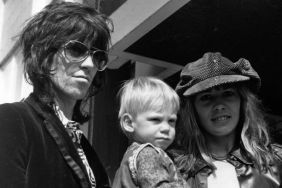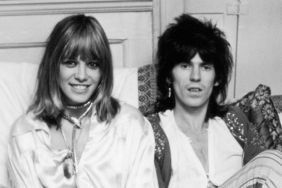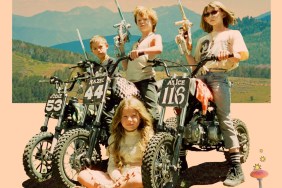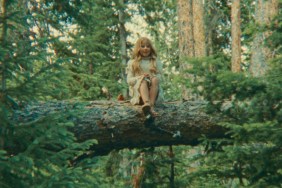
Writer Lee Gambin digs up and appreciates a classic dark American drama.
Set against the backdrop of mid-west America during the late 1800s, in a small halcyon town that is magically depicted as shadowy and a host to a enumeration of deep rooted secrecy, Albert (father of B-movie God Charles Band and director of the brilliant I BURY THE LIVING) Bands FACE OF FIRE is a remarkably unsettling film and a crossbreed of body horror, American tragedy, child-centric coming of age and having been released in 1959, is most certainly a decedent reminder from the not so long ago catalog of magnificent Film Noir pictures of the forties.
The film tells the story of a well-liked, handsome and affable handyman named Monk Johnson (James Whitmore) who in an act of heroism is horrifically burnt and disfigured, rendering him a monster in the eyes of the townsfolk. However, what this provocative and genuinely creepy film does is present the true ugliness of human nature and the deadly repercussions of mob mentality. The bleak aesthetic is stark and striking, the incredible use of darkness and shadow play is mesmerizing, while the camera angles, movement, tracking shots, elongated shots that dare not break away into cuts and the deliberately theatrical staging and framing of characters make for both a beautiful and thoroughly uncomfortable watch. The film is a masterwork, and dances with dangerous territory with an acute expression of wholehearted risk and daring innovation.
Accompanying the opening titles is a remarkably haunting song sung by school children that is incredibly reminiscent of Risseldy Rosseldy from THE BIRDS (released fours years later). The lyrics belted out (and equally whispered) by the children evoke nightmarish imagery about a monkey in peril that struggles to fit in at a traveling circus. With this menacing song, the film instantly sets up the concept of the freak and the outsider as its centerpiece, but with it delivers an appealing and attractive image as its curtain raiser: small town working class children heading home from a days fishing. Among these children is the sensitive Jimmie Trescott (Miko Oscard) who is first seen with Monk Johnson, and the two could easily be read as father and son. Of course, we soon learn that Jimmys father is the kind hearted doctor Ned Trescott (Cameron Mitchell) who stands as the films grounded moral compass.

Morality and mortality are eternally linked throughout the film, and thematically this is something that director Albert Band seems to be completely invested in. The predicament that Dr. Trescott is in whether or not to save Monk, rescuing him from death but ultimately setting him up for a drastically empty life makes for a dramatic crux in the narratives unfolding, and his perpetual trust, loyalty and devotion to Monk cements the films solid and well-intended heart. This film could have easily tipped over into carousel barker exploitation, but instead it marches to the beat of a maudlin character study and in many ways provides an insightful commentary on Ibsens Enemy of the People.
After we are introduced to Monk who is set up as a man who has played the field, been the local Lothario, is admired by men, lusted after by women and is a hit with the local children, we are invited into an intimate scene with his sweetheart who he wishes to settle down with. FACE OF FIRE delivers an anti-hero/monster who is not saintly, but instead wholly real and earthy a hedonist in a sense who wishes to make himself an honest man. The tragedy in this is that he never gets that opportunity. Band uses sound and music in an electric manner, playing with diegetic musicality such as the marquee-positioned marching band trumpeting their compositions and then having it bleed into the alarming sound of the fire siren summoning the brigade to fight the oppressive flames that consume Dr. Trescotts house. Monk races inside and rescues young Jimmy, but in turn is burnt and nearly killed. Along with the disfiguration of his face, Monks mental state is retarded and he is trapped by an inability to communicate. Much like Mary Shelleys monster in the much referenced Gothic classic FRANKENSTEIN, Monk is misunderstood and feared by the townsfolk who seem to completely lose sight of the man they once cared for and admired. This is what the film does so brilliantly it has a compelling keen interest in the monstrosities of human intolerance, disgust, abuse, callousness and the fear of difference.

With the childrens nursery rhyme being reminiscent of THE BIRDS, there is another set piece in FACE OF FIRE that is reflected in Alfred Hitchcocks ornithophobic masterpiece that is, when a group of children sit around a table at a little girls birthday party and Monk appears in the window terrifying the little tykes. It seems to foreshadow the bird attack on young Veronica Cartwrights seaside birthday party in Bodega Bay in Hitchcocks eco-horror hit. Other stand out moments in the film include Monk returning to his fiancé and staggering towards her while she screams in terror sliding across the floor and being cornered, a townsperson describing Monk as the devil with the wonderfully foreboding music underscoring his frenzied dialogue and Monk terrifying the townsfolk at an outdoor dance. However, it is the incredibly moving ending sequence that stands out as a criminally undervalued and underrated coda to a pathos-driven monster movie. In the final moments, little Jimmy watches his old friend and fishing companion stretch out his arms, lost in the memory of being caught in the fire. He leaves the other children that have taunted Monk, and walks over to the unfortunate outsider, and collects his hand, walking off with him to the fishing hole while his proud father and his wife (Bettye Ackerman) watch from the window with tears rushing down their cheeks.
The visual styling is reminiscent of Charles Laughtons NIGHT OF THE HUNTER (1955) which also presents children as resourceful innocents that have a secret world hidden from adults, and it captures a sense of whimsical poetry that would be found later in films such as TO KILL A MOCKINGBIRD (1962) as well. Disfiguration is a thematic element that propels the films basic surface plot, and it does it just as well as films such as David Lynchs modern attempt at classicist cinema THE ELEPHANT MAN (1980) and Peter Bogdanovichs sun-kissed Christ-figure biopic MASK (1985), but it also is most definitely a horror film that runs a similar course to small town spook shows such as THE TOWN THAT DREADED SUNDOWN (1976), THE DARK NIGHT OF THE SCARECROW and even the slasher classic THE BURNING (both from 1981). The make-up design for the horrifically scarred and burnt Monk is effective and startling, and when he lumbers about with a cloak covering his face it is a distressing image. However, what is much more frightening is the ugliness that emerges as a result of the violence of the human spirit and the disconnection to empathy most of the characters that populate the film possess.









